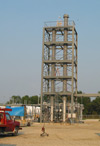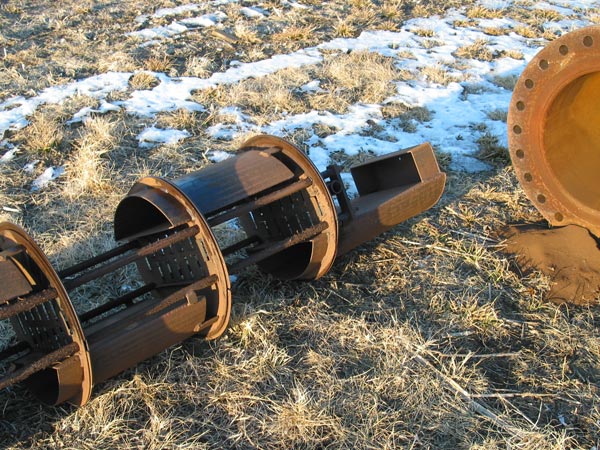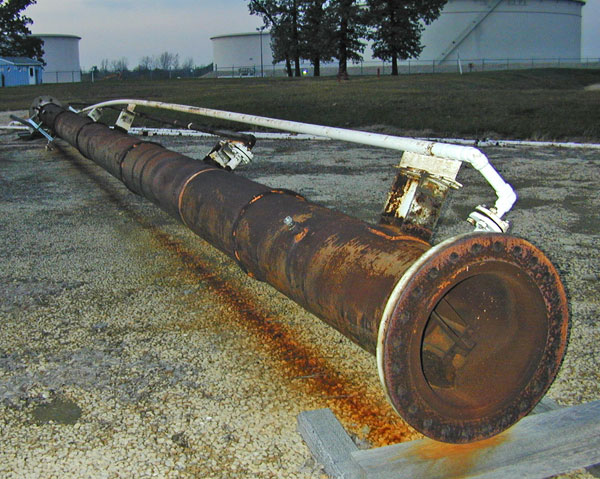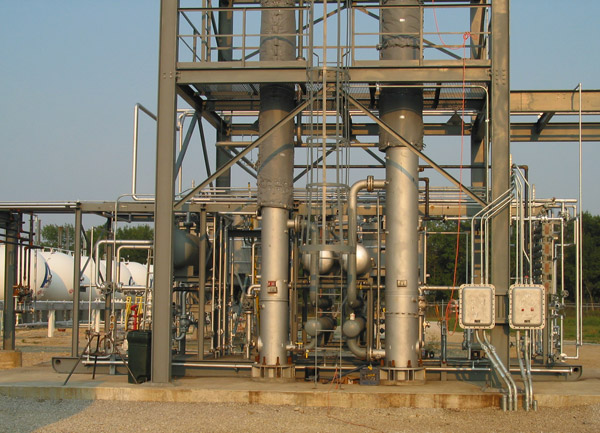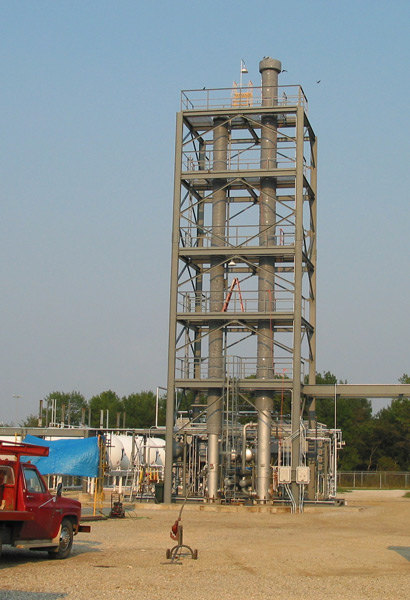Project Synopsis
Computer process simulations and operational evaluations of a new acquisition hydrocarbon light ends fractionation system. Simulation DiagramProject Summary
REFINERY LIGHT ENDS FRACTIONATION SYSTEM PROCESS SIMULATION AND EVALUATION
Process Engineering Associates, LLC (PROCESS) was subcontracted by an engineering firm to execute computer process simulations and operational evaluations of a hydrocarbon light ends fractionation system. The ultimate client, an independent petroleum refining company, had purchased distillation columns on the used equipment market that they hoped could be used for a light ends fractionation system. The system consisted of two sieve-tray distillation columns and associated hot oil reboilers, air-cooled overhead condensers and overhead receivers, and ancillary process equipment. Specifically, PROCESS simulated operation of the system for four (4) separate applications for the purpose of determining the following for each application:
- Feasibility of the system for obtaining the required product purity
- Operating conditions for optimum system performance
- Process control strategy for optimum system performance
The four applications that were simulated and evaluated included the following:
- Application 1 – 99.9 weight % n-propane production from pipeline propane (propane de-ethan-ization)
- Application 2 – 99.9 weight % n-propane production from Feedstock #1
- Application 3 – 99.9 weight % iso-butane production from Feedstock #2
- Application 4 – 99.9 weight % n-butane production from Feedstock # 3
PROCESS initially obtained engineering data for the purchased light ends fractionation system as well as operating data from the previous fractionation system application. With this information, as well as petroleum feedstock and product purity specifications data, PROCESS developed an evaluation basis that governed the process simulation and evaluation tasks. Licensed computer process simulation software was utilized to characterize fractionation system operation based on data from the previous system production application. Each application was then simulated with the software for the purpose of first determining application feasibility and then for the purpose of determining optimum system operating conditions. Operating conditions determined included product purity; product recovery; feed, overhead, and bottoms operating temperatures and pressures; reboilers and overhead condensers duties; column reflux ratios; and system throughput capacities. These simulation results, as well as simulation information pertaining to columns tray-to-tray profiles and from sensitivity analyses, provided the basis for determination of the process control scheme most conducive for optimum system performance. Process control diagrams (PCDs) for each application were prepared to show system controls and monitoring points.
PROCESS submitted separate project reports for each application simulation and evaluation to the client and to the ultimate client. This information was used by the client for additional detail design, design of control system hardware, and control system configuration. The information was used by the ultimate client for long-range marketing planning and production scheduling.
The client later reported, during a PROCESS site visit, that all four (4) applications had been successfully run by the system and that the operating conditions predicted by PROCESS were essentially 100% accurate, i.e. the target product purities were being met at the operating conditions recommended by PROCESS.
Industry Type
- Petroleum Refining
Utilized Skills
- Distillation column evaluation
- Computer process simulation
- Distillation optimization
- Refinery process controls




